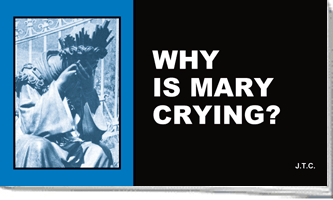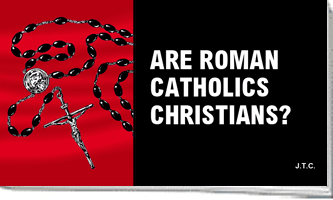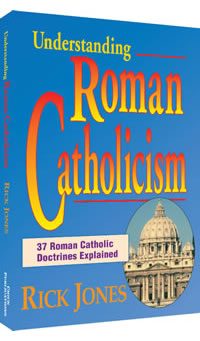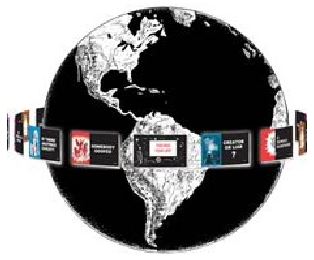Gibson's "Passion" Masterful Ecumenism
- Issue Date: May/June 2004
Now that Mel Gibson's film, "The Passion of the Christ", has been widely viewed, many varied opinions have emerged. Roman Catholic viewers were gratified to see many of their rituals reflected in the script. They saw the 14 Stations of the Cross, the Five Sorrowful Mysteries of the Rosary, the brown scapular, a strong role for the Virgin Mary (Mother of God), and many added details not found in scripture but faithful to visions of Roman Catholic mystics such as Anne Catherine Emmerich and Mary of Agreda.
Protestants not acquainted with these popish superstitions saw only the gruesome trial and execution and largely overlooked the departure from scripture, excusing it as artistic license. Gibson masterfully walked the fence between the two perspectives and careful pre-release promotion avoided most negative reactions. Most discerning were the ex-Catholic Bible believers who were able to see both views at once. One email received at Chick Publications commented: "Watching this movie as a former Catholic I quickly saw that unless one has been initiated into the cult of Catholicism, or well read in its doctrines, that person probably won't recognize all the symbolism and false doctrine cleverly hidden within "The Passion of the Christ'".
Catholic leaders, however, well recognize the impact on Protestants. The Catholic family weekly newspaper, Our Sunday Visitor, gloats; "Imagery in Gibson's film is challenging some Protestants to re-examine faith assumptions."
Under the heading of Ecumenism, the article states: "The film's Marian references, along with depictions of the Eucharist and redemptive suffering, will have an almost subliminal impact on Protestant audiences — and may soften theological differences." In other words, make the protestants more willing to accept unbiblical Roman Catholic teachings.
Also, where the protestant only sees Mary as a deeply concerned and loving mother, Catholics see her otherwise. When Peter, whom they claim as their first pope, falls at Mary's feet declaring, "I have denied him, Mother," this symbolism of the pope's subservience to the "Blessed Virgin" is missed by the protestant, but is not lost on the Catholic viewer.
Catholic screenwriter, Barbara Nicolosi is quoted as saying, "There has been a tremendous willingness of my evangelical friends to say this is the most beautiful representation of Mary they have ever seen...It definitely opens the heart to her motherhood and it has a chance to heal the wounds over Mary between Catholics and Protestants."
Healing of these "wounds" would involve accepting the Vatican's teachings that Mary was born without sin, remained a virgin even after giving birth to Jesus, is declared to be the "Mother of God" as well as the whole human race, did not die but was "assumed" into heaven where she lobbies a harsh and judgmental Jesus on behalf of poor sinners who look to her as co-redemptrix and co-mediator with Christ.
In the protestant view, the major defect in the film was the lack of a full portrayal of the glorious resurrection of Christ. This is also understandable with the Roman Catholic focus on suffering. Jesus is still shown in agony on their crucifix.
Catholics teach that human suffering somehow contributes to a "treasury of merit." Christ's suffering is pooled with man's suffering to provide payment for sin. This is the "redemptive suffering" referred to in the quote above. Yet, there never seems to be enough with everyone facing purgatory after death to continue to suffer for their sins.
No doubt that "The Passion of the Christ" has raised the public's awareness of Christ and how He died for our sin. Bible believers must not let this window of opportunity pass. We will find that people who have seen the film will be much more open to discussing the rest of the story. And there is no better way to show them that Jesus is also Creator and risen Redeemer than to get them to watch the Chick video The Light of the World. If this is not possible, Chick tracts work well in presenting the fullness of the gospel.
- See more articles on related topics:
- Catholicism
- Ecumenism
- False Religions
Other Articles from May/June 2004:
- Youngsters Told to 'Construct' Their Own Gender
- Thousands of Tracts Taken From Merchant Displays
- Shadow of Persecution Advancing
Toward U.S. Christians
- Public Schools New Recruiting Field for Homosexuals
- A Message From Jack Chick
- 'Light of the World' Video a True Soul Winner
- Chick Mail Bag May-2004
- Is Water on Mars a Nail in God's Coffin?
- Prison Ministry Letters: May-2004
- Homosexuals Working Hard to Recruit Our Kids.
- Tract Passing Tips - May 2004
More on Catholicism:
Products of Interest:

Why Is Mary Crying?
Devotion to Mary doesn't please her. It breaks her heart.
Are Roman Catholics Christians?
Show Catholics that neither their good works nor their religion can save them.-

Alberto
32-PAGE, FULL COLOR COMIC BOOK - Alberto Series Part 1 - Here is how Alberto, as a Jesuit, helped destroy churches and ministries. But as he read the Scriptures, he saw that Catholicism couldn’t save.
-

Understanding Roman Catholicism
224 pages
37 Catholic doctrines from the current Catechism are compared with the Scriptures. They're not Christian!



